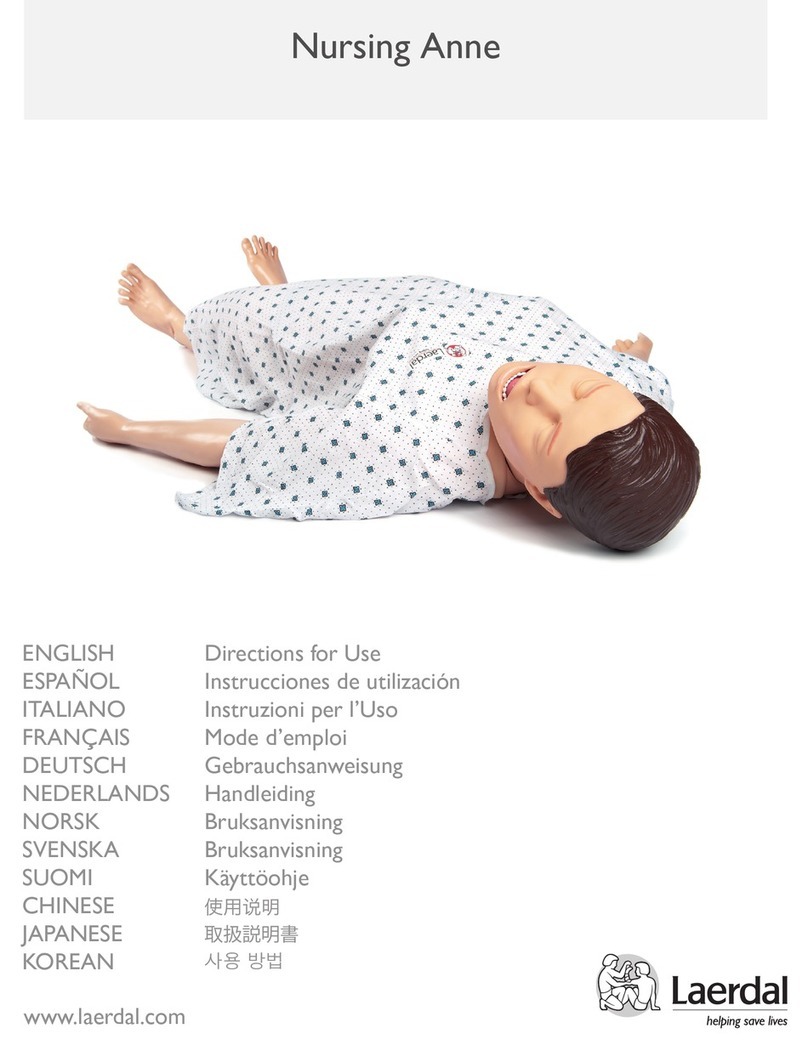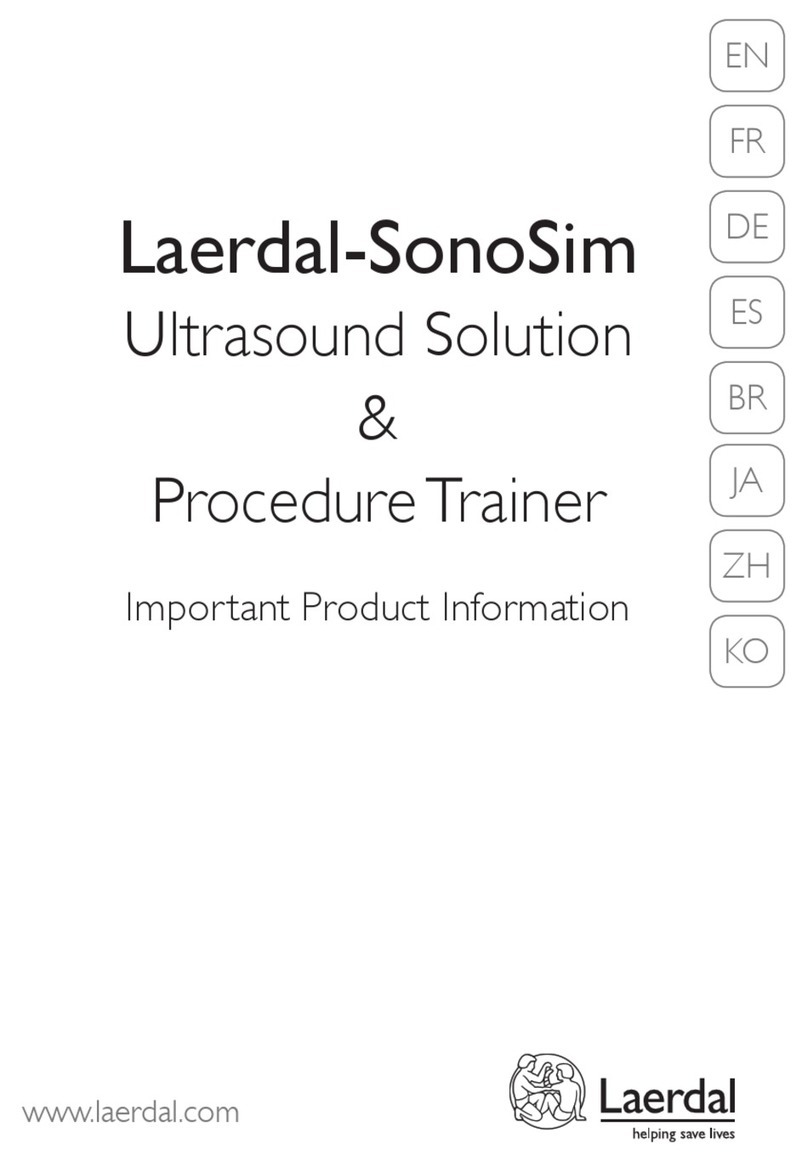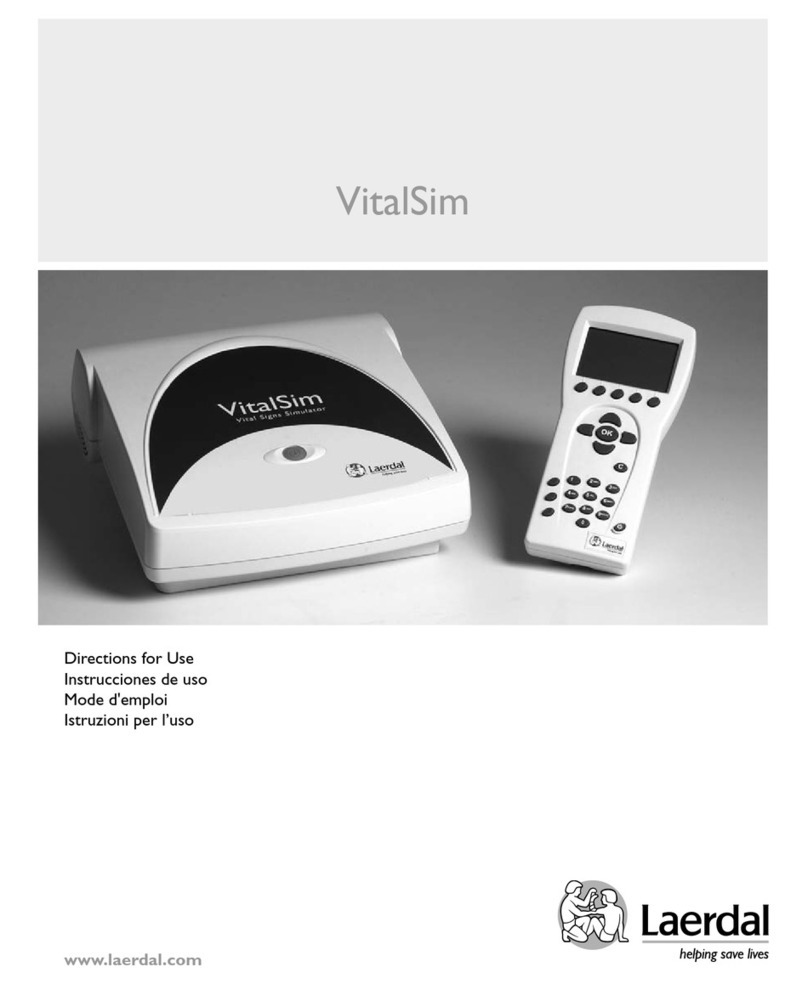Overview
The HeartStart Trainer M5086A is designed to look like
the HeartStart HS1 Defibrillator. However, some of the
defibrillator’s physical features are either inactive in the
Trainer or behave differently from their counterparts in
the defibrillator, as noted below.
A TRAINING PADS CARTRIDGE HANDLE.
Pull up on the handle to turn on the Trainer.
Remove the cartridge’s hard cover, peel off the film
seal, then lift out pads.
B ON LIGHT. The Trainer's green ON light is on solid
when theTrainer is on, and off otherwise. (In the
HS1 Defibrillator, the green Ready light blinks when
the defibrillator is in standby mode, is on solid
when the defibrillator is in use, and is off when the
defibrillator needs attention.)
C ON/OFF BUTTON. You can also turn on the
Trainer by pressing this green button.To turn off the
Trainer, press the green button again and
hold it down for one (1) second.
D INFORMATION-BUTTON.This blue “i-button”
flashes when it has information you can access
by pressing it. In the Trainer, the i-button flashes
when scenario selection is available and at the
beginning of a patient care pause when CPR
coaching is available.
E CAUTION LIGHT.This triangular light flashes
during rhythm analysis and is on solid when
a shock is advised, as a reminder that no one
should be touching the patient.
F SHOCK BUTTON. This orange button flashes
when theTrainer advises you to deliver a shock;
press the Shock button to deliver the simulated
shock.
G INFRARED (IR) COMMUNICATIONS PORT.
This feature is not active in theTrainer. (In the HS1
Defibrillator, this feature is used to transfer data
directly between the defibrillator and a computer
running HeartStart Event Review data management
software.)
H SPEAKER. When the device is being used, its voice
instructions come from this speaker.
I TRAINING PADS CARTRIDGE.
This reusable cartridge contains self-adhesive
training pads with attached cable.An Adult Training
Pads Cartridge (M5073A) comes with the Trainer.
Infant/ChildTraining Pads Cartridges (M5074A)
are available separately.
J TRAINING PADS CARTRIDGE LATCH.
Slide the latch to the side to release the pads
cartridge for removal.
K BATTERY COMPARTMENT DOOR.
Lift off the door to install or replace batteries.
TheTrainer is powered by four disposable
AA alkaline cells inserted in the recess on the back
of the unit.
5
ENGLISH
front view
top back view
































